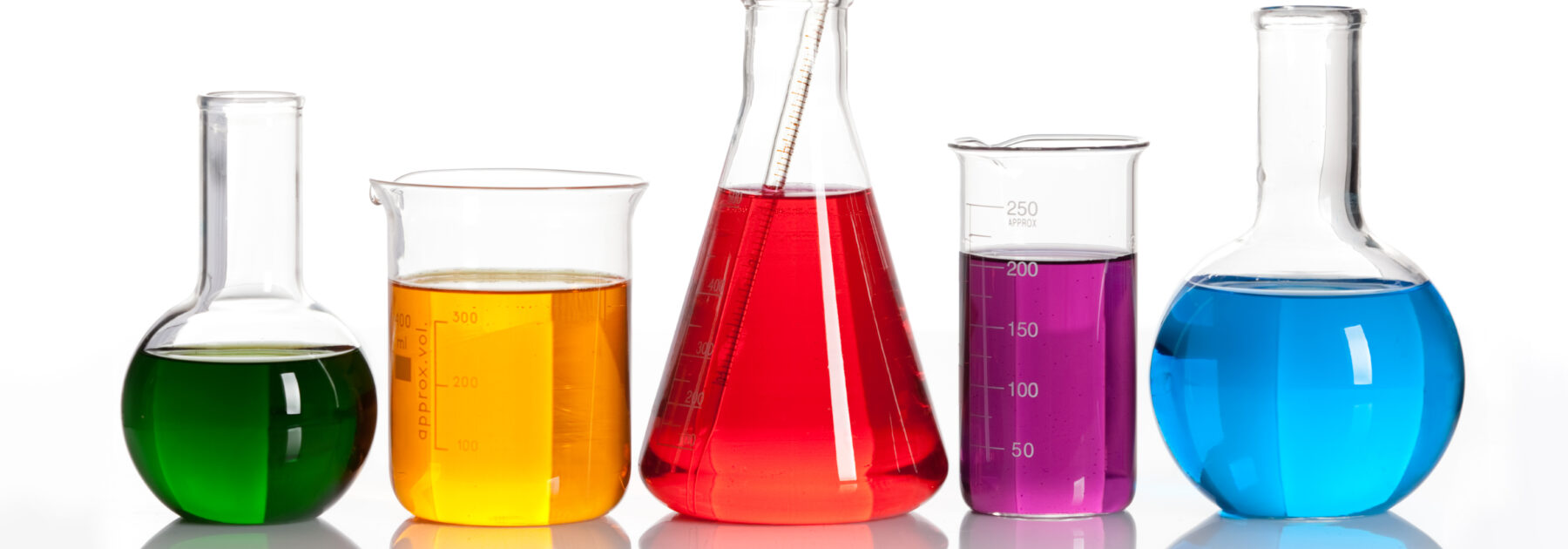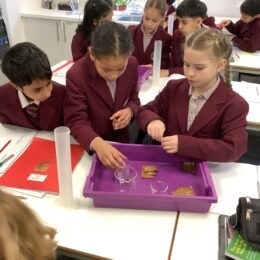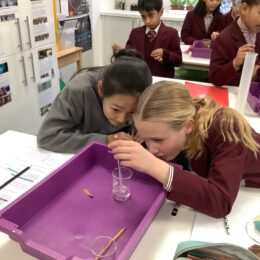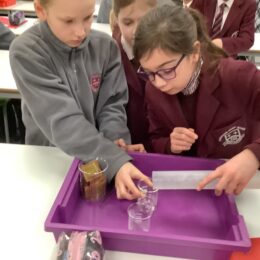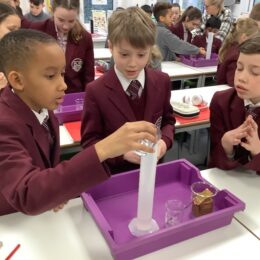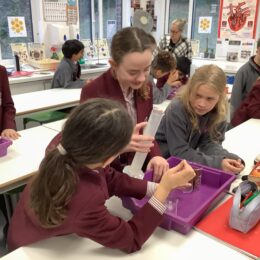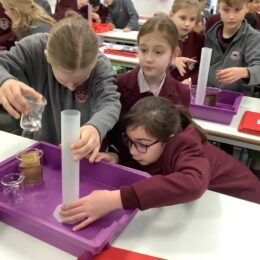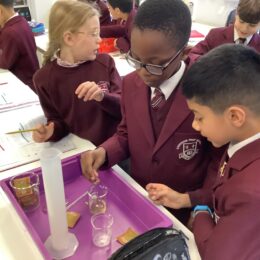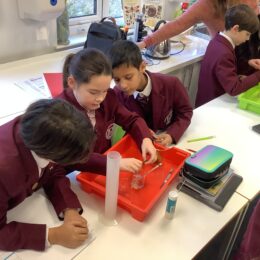Year 5 Chemists Look at Solutions
Year 5 have been hard at work learning how to separate mixed materials and the principles of how solutions are formed with a solvent and different solutes.
A particularly interesting practical in this series saw the pupils investigating the difference in how soluble solutes are. We found we could dissolve much, much more sugar into water than salt, which really surprised us as the sea is salty so we initially thought that salt would be more soluble. It also made us really think hard about food choices and sweet drinks and treats knowing how much sugar can be in these things.
Another practical saw us compare grain size of a solute. We used salt for this and compared how salt from a grinder, salt grains from a shaker and salt crystals for the dishwasher had very different times for the same mass to dissolve. We learned about surface area and how we can add up all the surfaces of the salt and it is here the water can start dissolving – the finer the grain, the greater the surface area so faster dissolving. To link in with the Global unit on the Arctic, we related this to the fact Arctic animals have a much smaller surface area compared to desert animals, which means they get less cold as the icy conditions have less surface to reach.
Our latest experiment looked at how temperature affects not just the speed of dissolving, but also the amount of solute dissolved because of something called kinetic (movement) energy – here we found hot water could dissolve up to 8 packets of sugar, compared to just half a packet in cold water!
Well done Year 5 chemists, excellent research and findings. The next experiments will see us filtering, evaporating and decanting!


